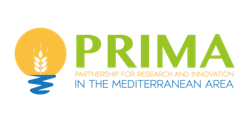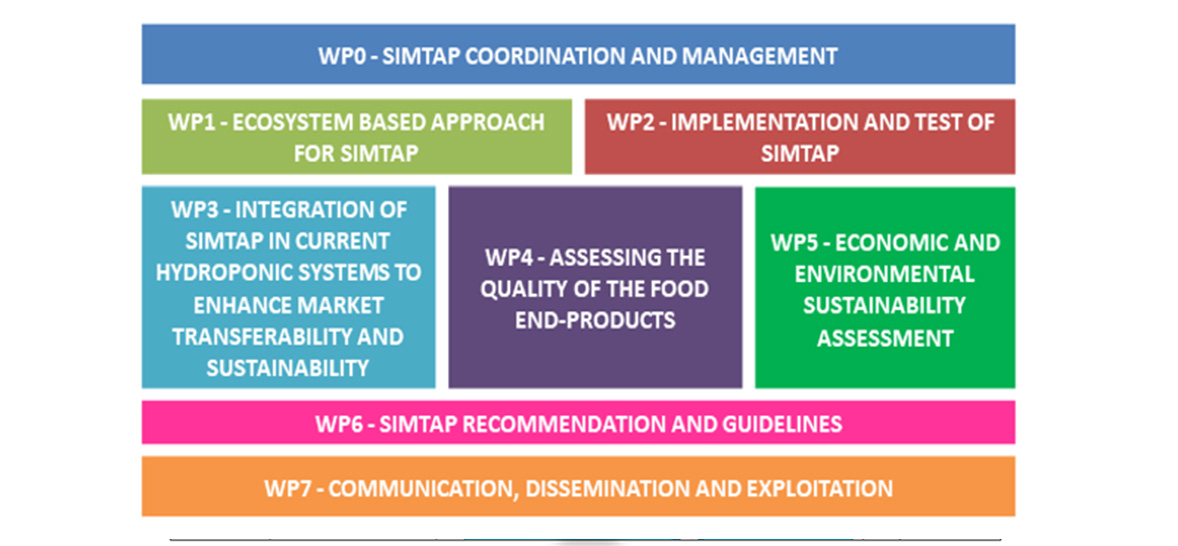The international project entitled "Self-sufficient Integrated Multi-Trophic AquaPonic systems for improving food production sustainability and brackish water use and recycling - SIMTAP" was approved in November 2018 as part of the PRIMA (Partnership for Research and Innovation in the Mediterranean Area), Call 2018 (Section 2), started on 1 June 2019 and ended on 31 May 2023, after an extension of one year, which was required due to the lockdown in 2020 caused by the pandemic of Covid-19. The project was coordinated by Prof. Alberto Pardossi of the Department of Agriculture, Food and Environment, University of Pisa (UNIPI), who was supported by Prof. Carlo Bibbiani (Department of Veterinary Sciences). Other partners were the following:
- University of Bologna, Department of Agro-Food Sciences and Technologies, Bologna (Italy) (UNIBO; TL: Prof. Daniele Torreggiani)
- University of Milan, Department of Environmental Sciences and Policies, Milan (UNIMI; TL: Dr. Jacopo Bacenetti)
- INRAE-Institut Agro SAS Sol Agro et hydrosystème Spatialisation, Rennes (France) (INRAE; TL: Dr. Joel Aubin)
- Lycée de la Mer et du Littoral, Bourcefranc le Chapus (France) (LML; TL: Dr. Vincent Gayet)
- Mediterranean Fisheries Research Production and Training Institute, Antalya (Turkey) (MEDFRI; team leader: Dr. Mehmet Ali T. KOCER)
- Ministry for Agriculture, Fisheries and Animal Rights, Aquaculture Directorate, Department of Fisheries and Aquaculture, Marsa (Malta) (MAFA: team leader: Dr. Iman Busuttil)
- Korolev GmbH, Bonn (Germany) (KOROLEV; TL: Dr. Rainer Linke).
This project moved from the IMTA approach towards an innovative self-sufficient integrated multi-trophic aquaponic system (SIMTAP) for small scale, labour-intensive and environmentally friendly marine fish and halophytic plants production adapted to the typical socio-economic and climatic condition of Mediterranean areas.
The main goal of SIMTAP was to define, design, set up and test an innovative food production system that drastically reduce, on one side, the required fish feed inputs (e.g., fishmeal, fish oil, soybean, etc.) and the consumption of resources (water, energy), and, on the other side, the production of waste and pollution, decreasing the Life Cycle impact on the environment of this segment of the food industry. SIMTAP could be coupled with the re-use of the effluents from greenhouse soilless cropping systems, in a cascade effect acting both as a bioremediation of wastewater (run-off) from greenhouse cultivations, and as a recycling of the nutrients still contained in the same wastewater, thus helping the SIMTAP cycle. Besides, the water source can be either brackish or marine.
The project also aimed to evaluate the effectiveness and performance of SIMTAP systems in terms of food production and use of energy, water, and other resources. A multicriteria decision analysis model (DEXiAqua) was developed based on the indicators calculated with LCA, LCC, SLCA and EA to describe the performances of the three pillars (environmental, social, and economic) of sustainability of SIMTAP systems compared with the conventional hydroponic and aquaculture systems.






